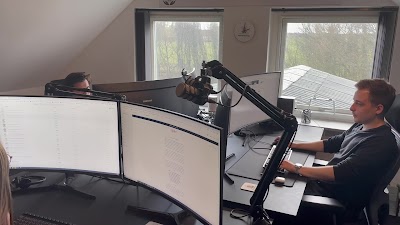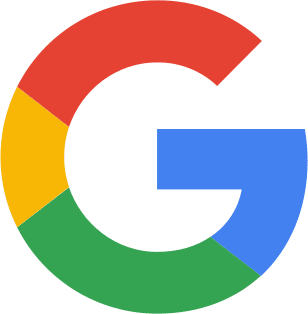Pay-Per-Lead is a marketing strategy to help your small business gain new customers. It refers to the practice of paying those who advertise for you as a business or company based on the number of leads they generate that suits your demography. For example, create a landing page (described in chapter 5) on your website to promote your maintenance services. Then, your partners will direct the visitors to that exact landing page of your website. Just think about how PPL will work for small businesses.
Explaining how PPL works for small businesses, once your affiliate brings your visitors to your website’s landing page for maintenance services, there should be a form for them to fill out. That should be asking for their primary contact information, such as:
- Name
- Contact Number
- E-mail Address
- Zip-Code
And then, once the visitor fills out the form and submits it, your business will get charged; a cost per lead who fills out the form. At this point, the revenue opportunity enters.
Below are the top 10 PPL for small businesses that will help you acquire good leads and turn them into actual customers.
10 Top Best PPL for Small Businesses
- Distributive Advertising
- Ignite Visibility
- Radd Interactive
- JumpFly
- SmarSites
- Loud Mouth Media
- Direct Online Marketing
- Chair 10 Marketing
- Tower 33
- Directive
All you need to do is register an E-mail address and verify your account. After that, you’re all set.
Pricing of PPL
Despite the abundance of cheap and free options available to advertise your company, you must not believe your firm can survive on a limited to a nonexistent marketing budget. In actuality, you’ll still have to make payments to stay current. Prices continuously vary depending on factors such as the category, location, referral, type of service, etc. The amount you should typically pay on Google Ads differs significantly. Spending ranges from $50 a month to upwards of $10,000 or more. The amount you ultimately spend depends on your sales objectives, the size of the geographic area you’re targeting, the volume of searches, and the level of industry competition.
Tracking Your Leads
Once registered to them, there are lead agencies that let you manage your leads and view all the work done. For instance, let us take one of our examples above, Ignite Visibility. Ignite Visibility allows you to access their Lead Manager tool from wherever you are once you get registered. Lead Manager Tool will enable you to keep track of your leads. Additionally, there are some perks to being a mobile app user. Aside from you can easily track your leads and leave specific notes to refer to later, change the status of your potential clients, request reviews, and even text a potential client via the app.
The good thing is that most of the lead agencies have the Lead Manager Tool perk once you get registered to their sites. But just in case, let us say that your lead agency does not have a lead management tool for you to access like CraftJack’s, do not worry. There are still free and easy-to-navigate tools to help you track your leads. Such spreadsheets like Microsoft Excel or Google Sheets, these tools can provide your business with a no-frills solution for lead tracking and lead organization. Hence, you can do it quickly and for free.
There are also other free sales lead tracking templates so you will never have to do it by yourself from scratch, tools such as:
Stages Of The Leads
Next, you must know about the stages of the leads so that you will know which ones require what action. Who you should reach out to, follow up, recycle or stop contacting.
Early
The early stage consists mainly of actions to get to know the leads and interactions with them because it is imperative to learn to classify your leads. Do they fit the demography and target market of your business? Do they have a big chance of being your customer? If not, it is no point in letting them reach the middle stage. This stage is critical. You have to figure out whether your leads are qualified or not. This stage is crucial because any potential customer who passes this stage should be a potential customer of your business.
Middle
The middle stage is where the magic happens. When the leads are qualified, then this is the stage where the customers will provide them with the services they need. This stage is where the transaction and agreements occur—the location where the leads become official customers of your business. Once the tips are in the middle stage, the client is entirely interested in availing of your business services.
Late
The late stage is everything that happens after the transaction. If the client is someone who turned into a customer or a rejected one because they did not pass the early stage or recycled, they might still have the potential of being a future customer of your business.
Now that you know about the stages of leads, you will see how they connect to the pay-per-lead strategy in the next point.
What Happens With PPL?

©FitSmallBusiness
Look at the picture above; see the column Stages and Sources. The stages and sources in this picture are from the company’s self-generated leads. That is why it has different sources, and the steps have different statuses. For example, the stages entered in the picture are “won,” “qualified,” and “interest.” Won belongs to the late stage. Qualified belongs in the middle stage, while interested is in the early stage. The reason why the picture uses these stages is that they are self-generating their leads. Indeed, their potential customer starts from the early stage because it is self-generated.
It is an excellent thing when paying lead agencies. In the first place, they will do the job for you; if you are paying for leads, your stages will immediately start at the middle stage. Imagine how convenient that is for your landscaping business.
The lead agency’s qualification to meet the demographic requirement of your business depends on the lead agency. In this case, your affiliate will only direct leads to your website’s landing page if the lead agency thinks the potential customer has a significant chance of availing of the services you provide. Since you are a business, you have exact demography as your target market; your lead agency will do that for you and provide you with qualified leads for that demography.
If you pay a lead agency for good leads, once the lead agency directs the potential customer to your landing page, it means they already are qualified. Once they are qualified and perform the action on your website (fill out the form), it automatically makes them a sales-ready lead, which means they have a massive chance of being your client. And when they reach the middle stage, the potential customer will turn into a customer, which will profit your business.
PPL makes your life easier, does the job for you, keeps the demography of your target market on track, and then makes you one step ahead.
Importance Of Lead Tracking
Lead tracking is crucial in keeping your landscaping company from wasting time on leads that aren’t qualified. By tracking your potential customer, you can ensure your business focuses on potential clients who need your services and are in the best position. To avail of them by applying the proper lead management system and tools such as Microsoft Excel or Google Sheets.
Do Small Businesses need PPL?
You might be questioning at this point, if you have a well-optimized website, a PPC campaign, and a Google My Business page, then why does your business still need this one? It is understandable for you to feel a little hesitant with this one.
For your business to be successful, leads are essential. Without information, you won’t have the sales and clientele you need to grow. Therefore, you can’t entirely rely on customers since they are fickle. You need to employ techniques and pay for affiliates to draw in the kinds of customers you want.
Without PPL, your business will be unaware of the demographics it should be aiming for, and most businesses or companies will struggle to generate leads without this identity. Thus, the success of typical companies depends on a steady flow of potential customers, and leads are a huge part of it.








